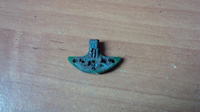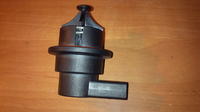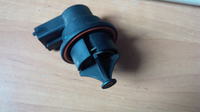Hello
I would like to describe the adventure (to warn others against this failure) with a car equipped with an Iveco 3.0 180KM engine installed in Fiat Ducato, Citroen Jumper, Peugeot Boxer.
The problem appeared suddenly while driving (international transport) during heavy rains in Europe (it rained and rained for two weeks), the engine displayed "check" and went into emergency mode, turning off and on temporarily solved the problem, but after a while the error popped up again, most often during engine braking, putting the clutch in neutral or depressing the clutch during deceleration prevented the error from appearing.
After connecting the simplest interface, it displayed the error P2563, sometimes P2562 (the latter during acceleration), the error could be deleted while driving and the car was driving, the turbo was fully functional, only "check the engine" every now and then, emergency mode and max 80km/h.
From what I learned from users and found on the net on English-language websites, the problem appeared when the car was still under warranty and the service replaced the entire turbo.
In my case, it was after the warranty and I was looking for the simplest solution myself.
It was enough to replace the plastic Honeywell sensor mounted tightly on the vacuum pear controlling the variable geometry of the turbine blades, in services and turbo regeneration workshops I heard: it can't be done! you can't! elements precisely adjusted! But nothing unscrews there, nothing is removed, the plates are bent, the sensor is replaced and they are bent back, the adjustment remains intact.
What was the cause of the failure:
The sensor, or more precisely, its internal electronics rotten from the water, the middle connection on the pit allowed water to flow to the solenoid valve, then small amounts got into the "pear", thus to the sensor and the end.
This error occurred in the first cars with a 180KM engine (160KM does not have this sensor) later models as I looked, the entire pit and the middle joint are thickly greased with silicone.
P.S.
It turns out that not only 3.0 engines have this sensor, smaller units too.
I post pictures of the old, new and damaged part.



I would like to describe the adventure (to warn others against this failure) with a car equipped with an Iveco 3.0 180KM engine installed in Fiat Ducato, Citroen Jumper, Peugeot Boxer.
The problem appeared suddenly while driving (international transport) during heavy rains in Europe (it rained and rained for two weeks), the engine displayed "check" and went into emergency mode, turning off and on temporarily solved the problem, but after a while the error popped up again, most often during engine braking, putting the clutch in neutral or depressing the clutch during deceleration prevented the error from appearing.
After connecting the simplest interface, it displayed the error P2563, sometimes P2562 (the latter during acceleration), the error could be deleted while driving and the car was driving, the turbo was fully functional, only "check the engine" every now and then, emergency mode and max 80km/h.
From what I learned from users and found on the net on English-language websites, the problem appeared when the car was still under warranty and the service replaced the entire turbo.
In my case, it was after the warranty and I was looking for the simplest solution myself.
It was enough to replace the plastic Honeywell sensor mounted tightly on the vacuum pear controlling the variable geometry of the turbine blades, in services and turbo regeneration workshops I heard: it can't be done! you can't! elements precisely adjusted! But nothing unscrews there, nothing is removed, the plates are bent, the sensor is replaced and they are bent back, the adjustment remains intact.
What was the cause of the failure:
The sensor, or more precisely, its internal electronics rotten from the water, the middle connection on the pit allowed water to flow to the solenoid valve, then small amounts got into the "pear", thus to the sensor and the end.
This error occurred in the first cars with a 180KM engine (160KM does not have this sensor) later models as I looked, the entire pit and the middle joint are thickly greased with silicone.
P.S.
It turns out that not only 3.0 engines have this sensor, smaller units too.
I post pictures of the old, new and damaged part.





